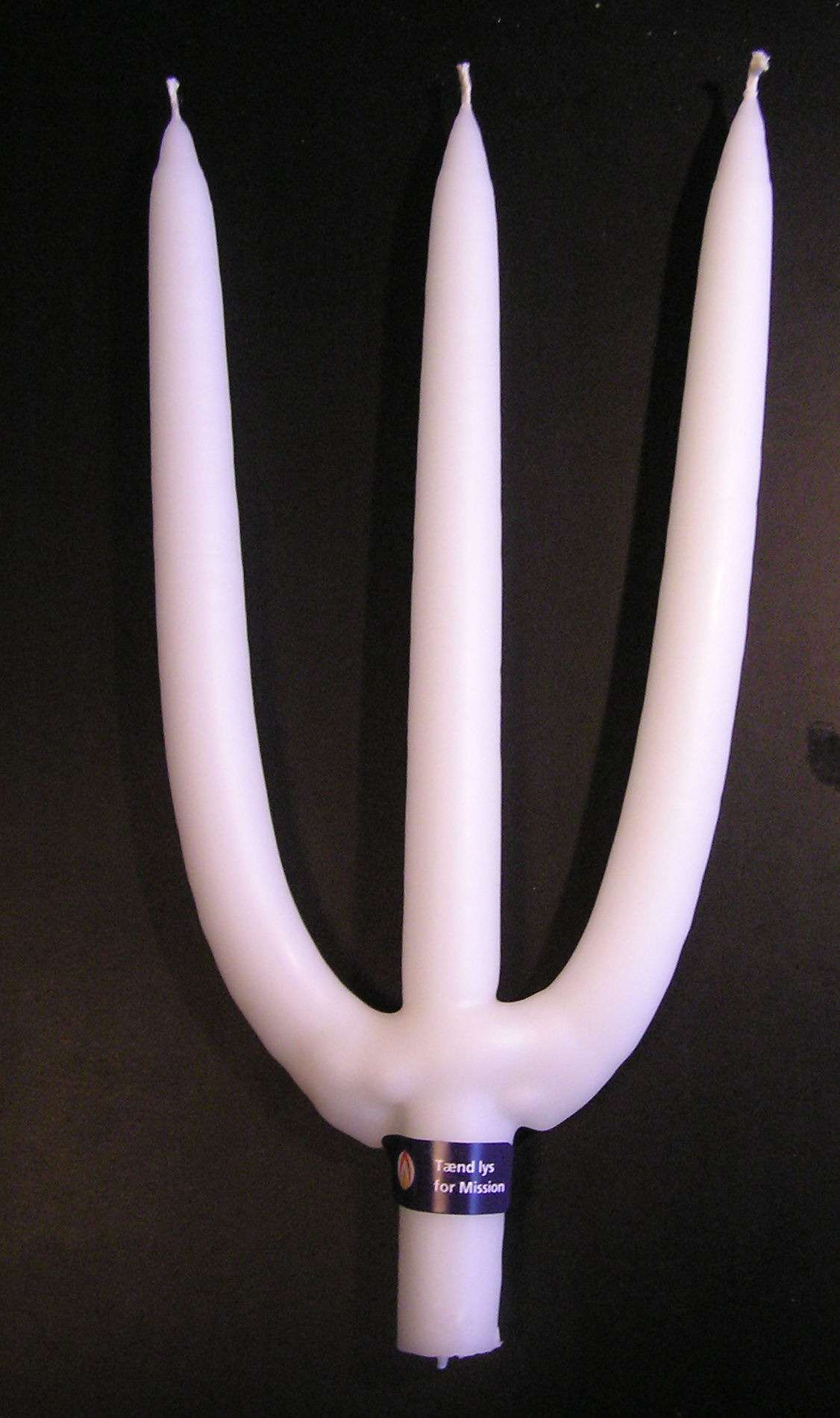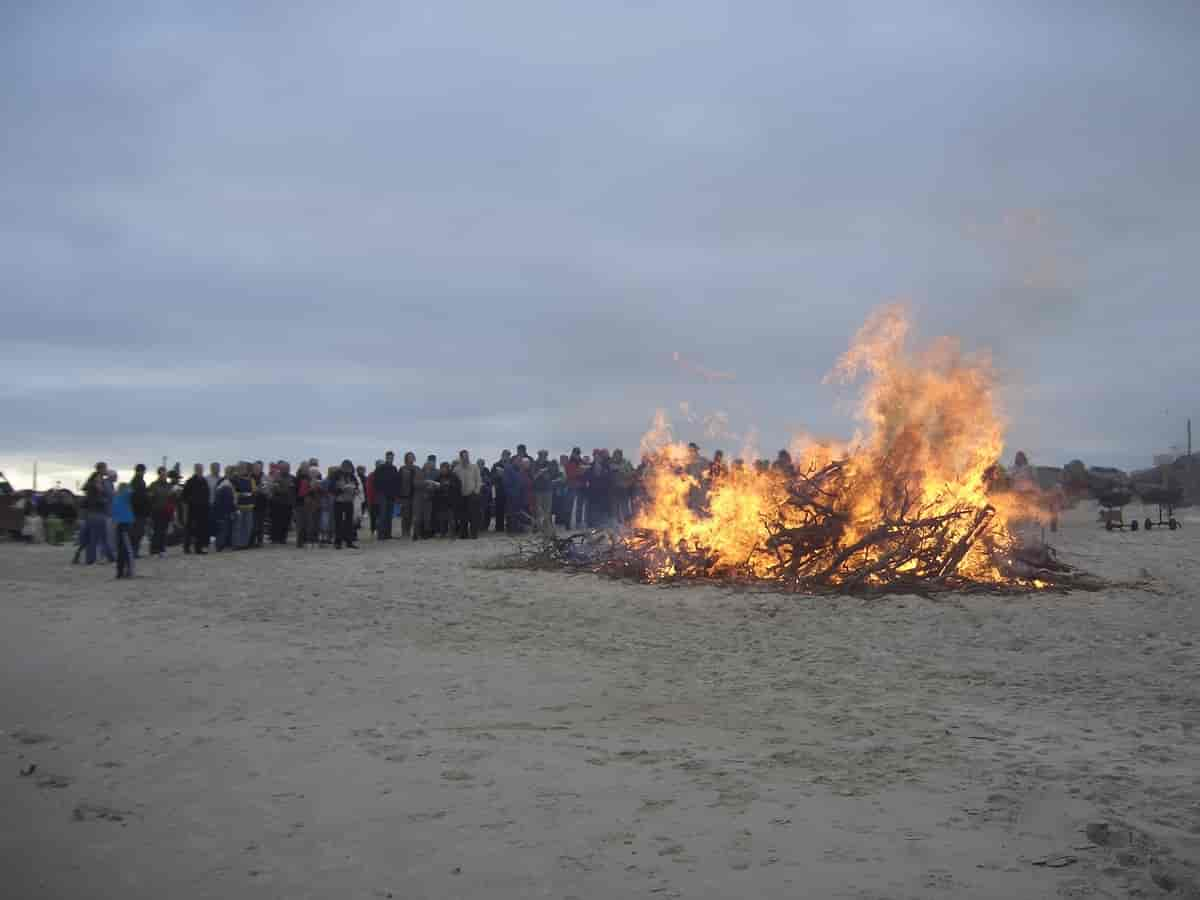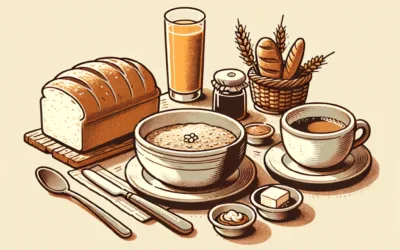From Midsummer to Christmas: Exploring the holidays and traditions of Denmark
Denmark is a country with a rich cultural heritage and a unique set of traditions. From the bonfires of Sankt Hans aften to the cozy hygge of Christmas, there is no shortage of holiday cheer in this small Nordic nation. In this blog post, we will take a closer look at some of the most beloved holidays in Denmark and the customs and traditions that make them special.
Whether you’re a Danish learner looking to deepen your understanding of the culture and traditions of Denmark, or simply a curious traveler planning a trip to this beautiful country, this blog post is for you. So let’s dive in and explore the Danish holidays and celebrations together!
Jump to a specific month:
January
Hellig Tre Konger – Holy Three Kings
In Denmark, Holy Three Kings is celebrated in January by lighting a special three-pronged candle. The day of the holy three kings falls twelve days after Christmas and some families use the day to mark the end of Christmas by removing the year’s Christmas decorations. In reality, fewer and fewer Danes celebrate Holy Three Kings day, but it still remains a tradition for many of the older generations.

February
Fastelavn – Fastelavn
Fastelavn is a Carnival tradition in Denmark and other Northern European countries. It involves children dressing up in costumes and going door to door asking for treats, similar to trick-or-treat on Halloween. In Denmark, a special tradition called “slå katten af tønden” (to hit the cat out of the barrel), somewhat similar to a piñata, is also carried out by the kids. Here the costumed kids take turns hitting a hanging barrel filled with candy – not cats! The first kid to knock the bottom out of the barrel is crowned the Kattedronning (Cat Queen) and the kid who knocks the final wooden board off the rope is crowned Kattekonge (Cat King).
A traditional pastry called a fastelavnsbolle is also eaten during Fastelavn. It is a cream- or jam-filled pastry with a glazed topping. Try it if you are in Denmark around Fastelavn, however, just watch the price if you decide to buy one anywhere near Copenhagen.

We recently released a podcast episode about fastelavn, so if you want to learn a bit more about fastelavn in Danish, then you can listen here: Hvordan slår man katten af tønden og er fastelavnsris noget man spiser?
April
1. April – April Fools’ Day
In Denmark, April Fool’s Day is not as widely celebrated as it is in some other countries, but it is still an opportunity for people to have some lighthearted fun. For example, it is common for people to send funny emails or texts to their friends, or to play small pranks on one another. Some media outlets may also publish humorous articles or stories on this day, in the spirit of the holiday. While April Fool’s Day is not a major holiday in Denmark, it is a fun way for people to let go of their inhibitions and embrace their inner prankster.
Påske – Easter
Easter is an important holiday in Denmark and is typically celebrated with a number of traditions and activities. Many families gather for a large Easter lunch featuring dishes such as boiled eggs, smoked salmon, and pickled herring. In the morning, it is common for children to go on an Easter egg hunt, with children searching for easter eggs hidden around the house or garden. A very unique tradition is the tradition of sending gækkebreve.
Gækkebreve, also known as “fool’s letters,” is a traditional Danish Easter activity that involves sending anonymous letters to friends and loved ones. To create a gækkebrev, a person will typically fold a piece of paper and then cut an intricately-designed shape into the paper, then write a humorous or rhyming message on it. The sender does not sign their name on the gækkebrev, and instead includes a series of dots corresponding to the letters in their name. The recipient must guess the sender’s identity based on the clues provided in the letter and the design of the fold. If the recipient guesses correctly, they win a prize, such as a small gift or a chocolate egg. If they do not guess correctly, the sender is owed a small gift from the recipient. Gækkebreve are a fun way to add some Easter cheer to the holiday season and are enjoyed by people of all ages in Denmark. Overall, Easter in Denmark is a time of renewal and joy, as the country emerges from the dark days of winter and celebrates the coming of spring.
We have a podcast episode (in Danish) about how easter is celebrated that you can listen to here.
Store Bededag – General Prayer Day
Store Bededag, also known as “General Prayer Day,” is a public holiday in Denmark that is celebrated on the fourth Friday after Easter. It is a holiday that was created to replace many, more frequent praying days known as “bodsdage”, but the SMV-government from 2022 has signaled a will to get rid of the Danish holiday.
May
Arbejdernes Kampdag – Labour Day
Depending on the terms of your contract, Arbejdernes Kampdag or Labour Day can be a holiday. On the day, protests as well as speeches from politicians and organizations are common. In Copenhagen, there is a tradition of gathering in fælledparken for speeches, music, and drinking.
Danmarks Befrielse – Liberation Day
Denmarks Liberation, the 5th of May, celebrates the liberation from Nazi Germany in 1945. Except for Bornholm which remained occupied by Soviet troops until the 5th of April 1946. The night before, on the 4th of May, it is tradition to put a lit candle in your window to remember the end of having to use dark curtains and limit the use of light which was mandated during the occupation.
Mors Dag – Mother’s Day
Mother’s Day is not celebrated much differently in Denmark compared to other countries. The Danish celebration originates from the USA and has only been celebrated in Denmark since 1910. It is not widely spread still, but it is not uncommon to see people sending flowers and/or a card to their mothers.
Pinse – Pentecost
Pentecost is a public holiday in Denmark, but it is probably one of the least celebrated holidays in Denmark. Some families might have a pinsefrokost (Pentecost lunch) and a few breweries release a “pinse beer” to celebrate the occasion. However, most Danes just enjoy the time off in whichever way suits them the most.
June
Grundlovsdag – Constitution Day
Grundlovsdag on the 5th of May marks the day Denmark signed the first and the most recent constitution in 1849 and 1953 respectively. The day is celebrated with speeches by politicians and organizations.
Fars dag – Father’s day
Father’s Day is celebrated much like Mother’s Day, except even less. On top of everything, Father’s Day is also celebrated on the 5th of June, so the day kind of lives in the shadow of Grundlovsdag.
Sankt Hans – Midsummer Eve
Sankt Hans Aften is one of those holidays that on paper sound too weird to be true. In Denmark it is celebrated on the 23rd of June. On the day, Danes everywhere gather and build a large bonfire – the bigger the better – and once the sun starts setting, they light the fire and burn a (fake) witch on the fire. In the past, the day was thought to enhance supernatural powers, meaning medicinal herbs collected on the day were more powerful, and even the dew on the grass had special powers. Water in springs had healing powers as well, which led to a tradition where people traveled far to visit natural springs and drink the healing water on midsummer. However, evil powers were also enhanced on the day, which is where the tradition of lighting big bonfires to keep evil witches and spirits away, comes from. The tradition of drinking spring water is no longer celebrated and burning the witch on the bonfire is a modern addition to the tradition, as well as having bonfire speeches and singing Holger Drachmanns “midsommervise”.
The day really is special and enjoying a nice bonfire on the beach or near a lake is a great experience that is not to be missed if you are in Denmark on the 23rd of June.
October
Allehelgensaften – All Hallows’ Eve / Halloween
All Hallows’ Eve, more commonly known as Halloween, is celebrated on October 31st in Denmark. In the Christian tradition, All Hallows’ Eve is seen as a time to remember the saints and martyrs who have passed away. It is also the evening before All Saints’ Day, which is a Christian holiday that commemorates all of the saints who have gone before us. In Denmark, Halloween is not as widely celebrated as it is in some other countries, but it is becoming more popular, particularly among younger people. Still, in Denmark, lots of people find the time to carve out a scary pumpkin with their children. Since not that many people celebrate Halloween, those same pumpkins are often placed on the street to indicate to trick-or-treaters that this house will have candy so that they don’t go in vain too many times. If you are interested in learning more about how Danes celebrate Halloween, we have an in-depth podcast episode (in Danish) about Halloween.
November
Mortens aften – Saint Martins Eve
Mortens Aften, also known as St. Martin’s Eve, is a traditional holiday in Denmark that is celebrated on November 10th on the Eve before St. Martin’s Day. On this day, tradition used to dictate that you had to eat goose. However, probably due to the large portion size of a whole goose, the tradition changed to dictate you have to eat duck. As such, expect ducks to be sold out around the 10th of November, as a third of all ducks in the country are eaten on St. Martin’s Eve. The origins of Mortens Aften can be traced back to medieval times when St. Martin of Tours was celebrated as a patron saint of beggars and the poor.
December
Advent – Advent
Advent is celebrated on the first four Sundays before Christmas and is marked by a number of traditions and activities. One of the most popular Advent traditions in Denmark is the advent wreath, or “adventskrans,” which is a circular wreath made of spruce, decorated with four candles, holly, pinecones, and other seasonal greenery. The advent wreath is often placed somewhere central in the home, and each Sunday during Advent, a new candle in the wreath is lit.
Another popular Advent tradition in Denmark is the Advent calendar, which consists of four presents, one for each Sunday of Advent. These presents can be anything from chocolate to a small toy.

Lucia Dag – Saint Lucy’s Day
Luciadag, also known as St. Lucia’s Day, is celebrated on December 13th in Denmark and many other countries around the world. St. Lucia’s Day is named after St. Lucy, a Christian saint who was martyred for her faith in the 4th century. The holiday is a celebration of light and hope and in Denmark, this is most clearly seen in the “Luciasang” or Lucia song.
On this day, children walk around schools, churches, and other public places and perform a song while dressed in white robes. The children each carry a candle, with the lead singer, the “Lucia queen” wearing a crown of candles.
You can watch an example of such a performance here.
In addition to the singing, St. Lucia’s Day is also marked by the serving of traditional rolls called “Lussekatter,” which are saffron-flavored buns shaped like S-curves and decorated with raisins. The tradition came to Denmark through Sweden but is becoming more and more popular. Any excuse to eat soft, warm, buttery rolls.
Jul – Christmas
Christmas Eve, Juleaften in Danish, is celebrated in Denmark on the 24th of December. Here, family from near and far gather to eat, sing Christmas songs, dance around the Christmas tree, and of course, exchange presents. Danish Christmas food consists of either roast duck or pork (or both..!) as well as copious amounts of potatoes, red cabbage, and of course gravy. A special serving of potatoes, called “brunede kartofler” which consists of small potatoes, cooked in a buttery, sugary caramel sauce is also eaten on Christmas eve.
After dinner, a dessert called “risalamande” is served. Risalamande is made from rice, cooked in milk. The cooked rice is mixed with vanilla, sugar, and whipped cream as well as chopped, peeled almonds. The dessert is served cold with either cold or warm cherry sauce. A single, whole peeled almond is added to the bowl and the person who finds the almond wins a small present called a “mandelgave” or “almond present”.
After dessert everyone gathers around the Christmas tree where they sing Christmas carols whilst holding hands and walking around the tree. In Denmark we call this “dancing around the tree”, but it can be argued how much “dancing” it is. However, certain songs involve mimicking what happens in the song, and others have you running around the whole house hand in hand. After the singing and “dancing” it is time to open presents. At this point, guests will typically eat Christmas cookies or confectionary made for Christmas and perhaps tea or coffee is served. We really could go much more in-depth with Christmas traditions in Denmark, and. we promise that we will soon.
Nytårsaften – New Years’ Eve
New Years’ Eve in Denmark has a lot of quirky traditions. At 18:00 everyone will gather in front of their TVs to watch the Queen’s New Years’ Speech. This in itself has additional traditions layered on top of it, with some families playing a game where you try to predict the topics the Queen will cover for the year, and then score points during the speech, to see who made the best prediction. Dinner on New Year’s Eve is usually several courses with cod being a traditional main dish. A typical dessert is a chocolate mouse, but there is a lot more variation for New Year than there is for Christmas.
In addition to watching the Queen’s speech, (which, as of 2024 will be the King’s speech) Danes also watch “Dinner for one” known as “90 års fødselsdagen” in Denmark. As such many Danes will have the TV on for a large part of the evening, and it is usually also often on the TV that Danes will watch the countdown to midnight, which is followed on the clock of the Copenhagen City Hall. Around midnight a traditional cake called “kransekage”, which is a marzipan-based cake is served along with something bubbly, usually champagne. The New Year is celebrated with fireworks outside and many consider it a good occasion to smoke a cigar.

And so, dear reader… we have come to the end of our journey through the wacky and wonderful world of Danish holidays. From burning witches on Midsummer Eve to the cozy hygge of Christmas, Denmark is a country full of unique traditions and celebrations. We hope you’ve enjoyed learning about these delightful traditions with us. And remember, if you do visit Denmark, don’t be scared if stores are suddenly closed, and instead try to see if you can find a way to participate in the fun. Join a midsummer’s eve bonfire on the beach, go watch a Lucia optog, eat the traditional fastelavnsbolle or go out and have duck on Mortens aften. So, when in Denmark, do as the Danes do – and be prepared to have a lot of fun doing it!





0 Comments